Foot-Traffic
Despite the thriving cannabis industry, advertising and promoting cannabis products remain challenging for sellers.Traditional mediums are out for cannabis companies. No television or radio advertising. Although some restrictions are gradually easing (such as Twitter’s recent announcement of allowing paid cannabis ads on the platform in states where it is legal) and digital advertising networks exclusively catering to cannabis are available, their reach is still largely restricted by publishers who accept their ads.
This is where Out-of-Home (OOH) advertising has stepped up in a big way to fill the gap left by other advertising mediums.
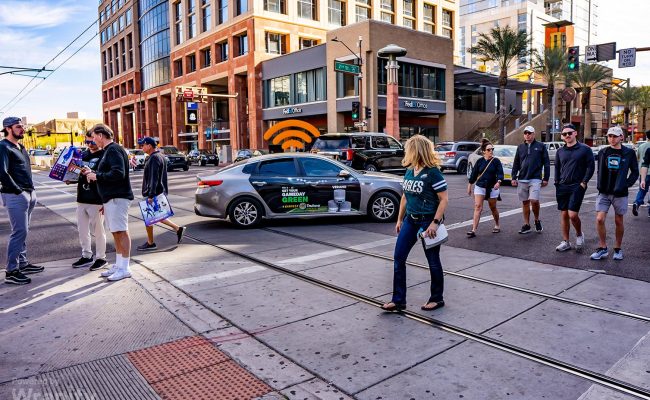
GOALS:
In an effort to enhance brand awareness and stimulate more foot traffic to multiple Trulieve dispensaries in the Phoenix area, ZMA Cannabis Marketing and Wilkins Media teams partnered with Wrapify to create a campaign that could leverage the heightened exposure during the events surrounding the 2023 Super Bowl.
Drive measurable foot traffic into 4 Phoenix area dispensaries
Utilize Wrapify SWARMs to hyper-target key events surrounding the 2023 Super Bowl.
Promote both Trulieve dispensaries and their popular cannabis brand Verano, which is a top vertically integrated, multi-state cannabis operator in the U.S. committed to enhancing community wellness by offering regulated cannabis products through responsible access.
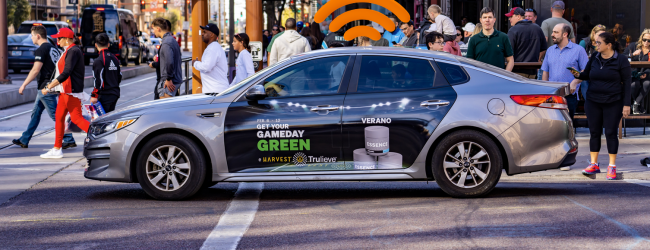
METHODOLOGY:
15 vehicles, driven by rideshare and delivery drivers, were wrapped and deployed by Wrapify over a 4 week period surrounding the 2023 Super Bowl in a campaign zone covering the Phoenix area.
Wrapify partners with Reveal Mobile to collect data on the audience and impressions generated by the vehicles while they are on the road, using the “DMOOH Exposure Methodology Standardization Guidelines and Best Practices” developed jointly by OAAA, Wrapify, and Reveal Mobile. The resulting audience data was compared with a control group to calculate the net lift.
RESULTS:
The campaign estimated 18,903,000 in campaign zone impressions. This brings the effective CPM to $1.17.
The campaign Hot Spot focused around your core demographic and netted 1,909,454 impressions in that zone.
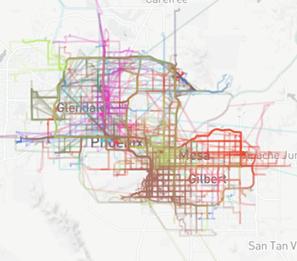
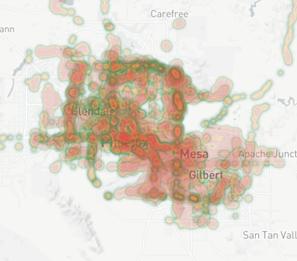
The Exposed (Test) Audience was three times (3X) more likely to visit one of the Trulieve locations than the Unexposed (Control) Audience.
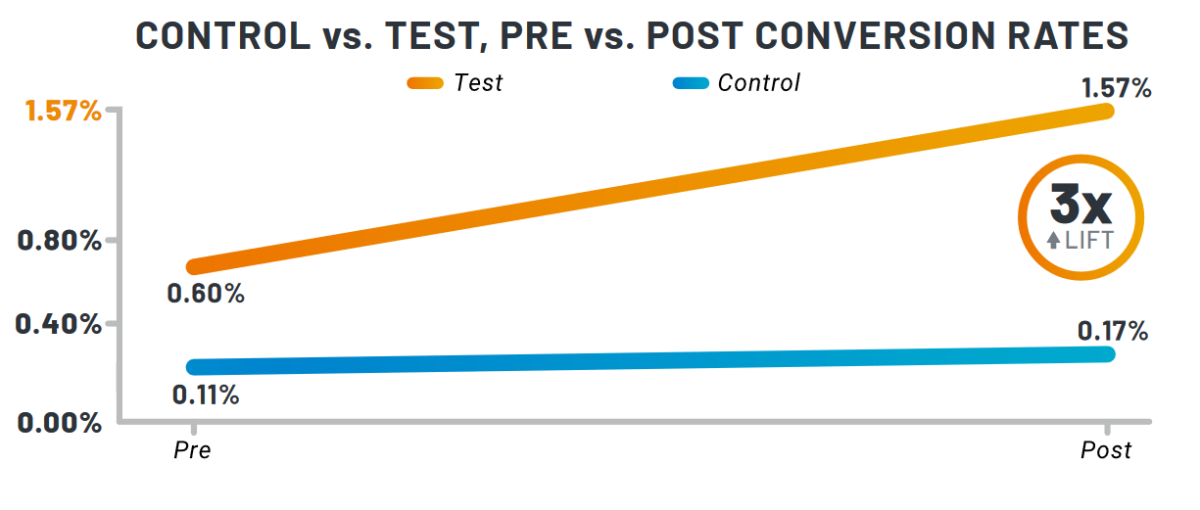
ZMA Cannabis Marketing, Wilkins Media, and Wrapify teamed up to deliver remarkable outcomes for Trulieve dispensaries. This collaboration underscores the potential of OOH advertising in enabling cannabis companies to effectively reach their target audiences and achieve their marketing goals
Marketing is rarely low-hanging fruit. But out-of-home (OOH) advertising has a history of effortlessly grabbing attention. Think about the last time you were stuck in traffic. After finding the perfect song to put on, your eyes can’t help but look for a worthwhile distraction, usually in the form of the highway billboard.
While what makes an ad ‘worthy’ is debatable, you’ve got to appreciate that OOH advertising handled well could help drive traffic for healthcare brands. The Entrepreneur found OOH delivers four times more online activity per dollar spent than TV, radio, and print.
Plus, the post-pandemic era is fanning a bigger appetite for the outdoors. In a recent study, 58% of Americans said they enjoy being outside, and experts believe there couldn’t be a better time for brands to engage in captivating OOH advertising.
Does OOH Work for the Healthcare Industry?
You may argue that a clinic ad differs from a retail brand ad. While both sectors strive for brand awareness, healthcare practitioners stand more scrutiny for advertising their services. But recent healthcare OOH statistics from the Harris Poll prove OOH can help you achieve your healthcare marketing goals. Take a look:
- Overall, 58% of survey responders recently noticed healthcare OOH ads
- 78% of Gen Zers, 74% of millennials, 57% of Gen X, and 40% of boomers have noticed healthcare OOH ads.
- 76% of those who saw an OOH healthcare ad engaged in follow-up action.
These stats prove that OOH advertising is an excellent avenue to improve your patient outreach initiatives in these ways:
- Driving brand awareness. There’s a 58% chance that someone will know about your brand.
- Driving action and boosting traffic. 37% out of the 76% of people who took action looked for the brand online, 21% followed the brand on social, and 19% took a picture to share on social media.
- Driving visitation rates. A further 30% visited the brand in person, while 28% asked their doctor about the service or product they saw in the ad.
Out-of-home advertising has also evolved from paper to digital technologies, which have zero ability to be pushy and repulsive and are more captivating.
How to Hack OOH Advertising for Healthcare Brands
Here’s another top advantage OOH has over online advertising. There are tons of ads in the online arena competing for a single user’s attention, and the chances of it being noticed are limited if it isn’t highly visible, preferably at the top of a webpage or SERP results.
An OOH ad is ‘unblockable’. It catches the viewer’s attention without fighting for it. Here’s how to maximize their benefits:
- Be Creative
It’s not so simple, right? Healthcare marketing can be like walking a tightrope because you don’t want to send the message that you’re taking advantage of people’s health conditions.
Still, you can’t miss out on the unique advantage of OOH ads, and neither can you afford to have your message drowned out in the thousands of others. Creativity gives you a chance to stand out.
Suppose you’re advertising in California. In that case, adding nuances of Cali’s beaches, skyline, and palm trees can help you add the sights and sounds of the region into your ad. You’d do well to find an expert design company to help you strike a balance between advertising for health and being creative.
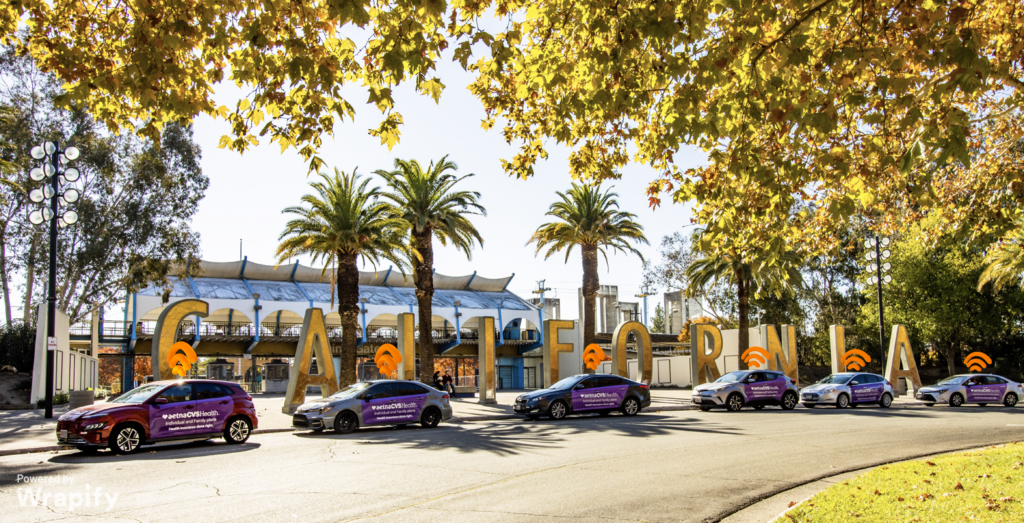
- Get the Placement Right
You need to place your ad in the right location to reach your target audience. To do this, you need to consider the nature of the market.
For example, a highway billboard might be ideal if your clinic is located in a motorist’s market. On the other hand, a clinic in a metro market such as Pershing Square in NYC would benefit from street-level messages easily seen by pedestrians, cyclists, and slow-moving cars.
Consider the cost of the space you choose as well. Areas such as Times Square demand more money and are harder to acquire than spaces in Manhattan.
- Identify What your Audiences Want
Play on your audience’s needs to create an ad that shows them you have the solution. The same Harris Poll study showed these reasons drive audiences to OOH healthcare ads:
- 37% are looking for local facilities.
- 36% are driven by the need to know how much you charge or are looking for a price cut.
- 30% need healthcare updates.
- 29% are seeking education on preventive measures.
- 20% are curious about new products.
- 18% are searching for insurance opportunities.
- 17% want to find online services.
- 17% are searching for a downloadable app.
- 16% are keen to find out about new healthcare brands, programs, or groups.
- 11% want information on business hours.
Of course, these needs are further divided into demographic types. For example, people from Gen Z and Millennials are more likely to look for apps to download.
- Study your Audiences Behaviors
Understanding your primary audience’s behavioral tendencies and travel patterns will help you reach more of them. Think of this factor as your way of laser targeting.
Find out about their daily journey to and from work, and remember to look into how those behaviors change by age. For instance, with fewer people commuting to work, and more spending their time in local neighborhoods, what would be more effective: an ad on the city’s subway, or on vehicles local to a specific suburb?
This information is a sure way to align audience parameters and behavioral tendencies with the market’s nature, enabling you to discover market hotspots.
- Look for the Perfect Timing
The demand for Turkey goes up during thanksgiving just like the demand for sunscreen increases when summer kicks in. It’s all about understanding the season and then finding out how you fit into your audience’s needs so you can sell healthcare brands as a problem solver.
If you offer allergy relief services, the transition between seasons is a prime time to tell your audiences about them.
Also, consider your audience’s stage in the purchase journey. An audience in the consideration phase requires a visibility-driven campaign –large images and catchy phrases. These messages are straightforward and don’t confuse the viewer with too many details.
On the flip side, an audience ready to spend their money –purchase stage –requires more specific, instructional messaging, including web address, coupon or discount information, and info on how to complete the purchase.
- Use CTAs
Lastly, include a call-to-action (CTA) to tell people what you’d like them to do. You can add a CTA in many ways:
- QR code that passersby can scan and access your website.
- Phone number to dial for consultations.
- Discount offers that promote in-person consultations.
Ensure the CTA is visible and attractive too. The messaging could be great but also wasteful because the viewers don’t know what you want them to do.
The Wrap-Up
The power of OOH advertising is undisputable, but it takes careful strategizing to leverage its capabilities so that it works for your brand.
That implies going beyond booking a space because the deal is attractive and retrofitting your messaging from competitors. Instead, find an expert with pricing that gives value for money, always centering the message on your target audience, the market, and your brand’s positioning.
Want to see your OOH ads reach farther than just where you place them? Wrapify can do just that. We’re an ad tech platform that wraps delivery vehicles in different OOH messages, helping brands be seen by far more people than possible with a stationary billboard. Schedule a demo.
Out Of Home marketing, or OOH, has become a staple in every marketing mix, and Nielsen’s marketing research reports have likewise become a vital resource for monitoring the success of various marketing platforms within the industry.
So when Nielsen publishes a report about audience engagement with out-of-home advertising platforms, everyone sits up and pays attention to what it says.
The report, released in 2019, was based on almost a thousand responses from a wide range of people age 16 and over, all across the US, who had taken some form of transport in the past month.
There are 4 established types of OOH ads
Many people still ask, “What is out-of-home advertising?”
Nielsen says… OOH advertising is an offline form of advertising that uses available surfaces in everyday life to send a message. Out-of-home advertising examples are grouped roughly into four categories. They include billboards as the most obvious format. Billboards have been around for decades and have been digitized for decades in urban spaces as well. There are three other categories of OOH. Street furniture, like bus shelters and rubbish bins with graphics on the sides, inhabit every city in the world. Shopping malls have spaces reserved for creative OOH expressions such as flooring mats with ad messages. Lately, it has become more popular to wrap vehicles with printed graphics, which are categorized as transit ads.
These messages are either static, such as billboards, or dynamic, such as wrapped vehicles, but their one defining characteristic is they are in the public space, where people move around in the course of their everyday lives. Traditional advertising platforms required audiences to access them actively by either turning on an appliance (computer, television, or radio) or buying the medium outright (newspapers and magazines).
Certain ads are noticed more than others
OOH messages are difficult to miss because they are in public spaces where masses of people move every day. Therefore, the opportunity for audiences to see and engage with these messages is far greater than on any other platform!
In even better news, the respondents of Nielsen’s survey reported that they noticed these advertisements, some even more than others.
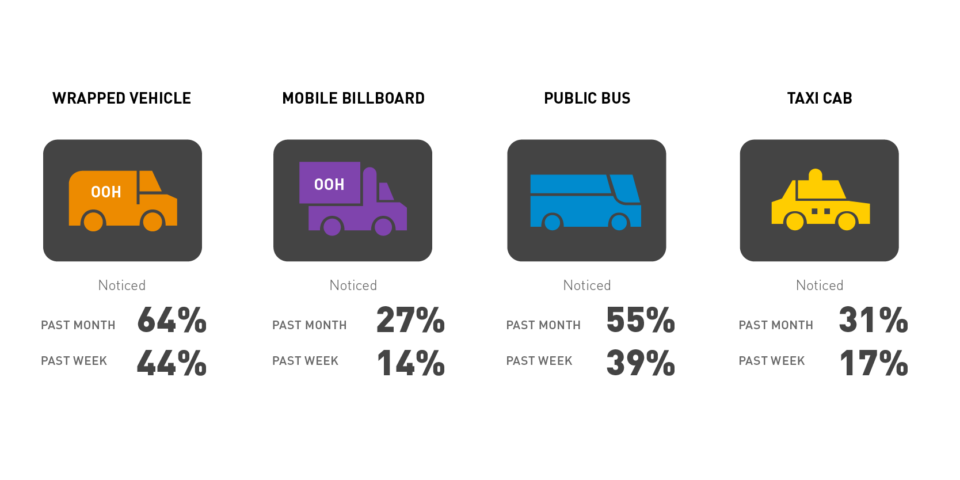
Nielsen says… wrapped vehicles were the most noticed ad type in the transit media category – delivering recall percentages well beyond the other types. So what does that mean for advertisers using this type of OOH medium? The more your out-of-home message is noticed, the more likely you are to see the result you’re aiming for. For example, after seeing a wrapped vehicle for a movie, almost a third of respondents reported going to see that film. These actions also relate to visiting restaurants or stores, attending a sporting event or concert, and tuning into a radio or television program.
Other actions audiences took after engaging with an OOH message include passing on the message via word of mouth, making a phone call, and going online to engage further using a different platform. Word of mouth is recognized as the most authentic form of advertising. Audiences place more trust in what their friends and family say about a product than what an advert says about the same product. Therefore, this combination of OOH and word of mouth is a winner, and it happens organically.
You can see how OOH can drive in-store foot traffic through this process, starting with message engagement, progressing to a follow-up action, and resulting in sales.
Shopping patterns make a difference
Nielsen says… most people do their shopping either after work or on their days off, and when they shop online, they do so mainly from the comfort of their homes. This only accounts for one-third of consumers, though. The other two-thirds prefer to do their shopping in-store.
This indicates messages can influence consumers whilst en route to their shopping destinations. Consider that foremost in people’s minds as they are traveling are topics like family, finances, social plans, and health. This data links up with the industries that have increased their OOH spending; namely Fintech, media, entertainment and hospitality, insurance and real estate, sports, and education.
This is an indication consumers are finding connections. These connections are between their primary personal concerns whilst traveling, and the messages they engage with from OOH media. A marketing campaign that uses OOH can leverage this as a passive primary contact, and then reinforce and build the message on other platforms.
Post-COVID numbers in OOH
Let’s take a look at some more recent post-COVID numbers for comparison. These come from the Out Of Home Advertising Association of America (OAAA) in a report released for Q1 of 2022. They give us a comparative insight into how the various sectors of out-of-home performed, according to the data gathered by the OAAA.
When compared to Q1 of 2021, the following points stood out with respect to the various categories of OOH advertising:
- Digital Out Of Home increased 57%.
- Cannabis spending increased by 31% percent.
- Political spending jumped 113% (and 90% over the last midterm election cycle in Q1 2018).
- Sports betting spending rose 131%.
- Fintech spending increased 22 times.
Among the top ten industries which spent the most on OOH were the above industries. Additionally, media, restaurants, public transport, hotels and resorts, insurance and real estate services, automotive, and schools also featured strongly.
These numbers tell us the big players in the ad industry believe out-of-home digital advertising has become a large and important element within the marketing mix because they are putting more of their money into that option.
We can also see certain markets believe OOH is a more effective platform to reach audiences, namely those in the Fintech, sports, political, and cannabis industries, and it is becoming more popular with a number of key industries as a means of communication, namely the media, automotive, and educational sectors. These are very broad categories with reach into aspects of every person’s everyday life, indicating OOH is a growing platform that is earning player confidence by producing reliable results.
TL;DR
- OOH ads offer a versatile and flexible creative platform for impactful messages.
- Wrapped vehicles are the most noticed medium on the road.
- Most audiences will engage with OOH messaging on some level.
- Most audiences will convert this engagement into actions resulting in purchases or other forms of desired consumer behavior.
Offline advertising is as good as online advertising. However, relying on one advertisement channel may not increase your sales as much as you would like. But what if there was a way to combine the two for the best results? That’s where Omni-channel advertising comes in.
About 86% of buyers switch between two channels often, shopping online and offline. All the more reason to combine your marketing channels for the success of your business. To stay on top of your game, you must provide customers with a consistent experience across all touch points.
As a marketer, you need to know what omni-channel advertising can do for your business. Here, we discuss the basics of omni-channel advertising to understand how it can be helpful.
What Is Omni-Channel Advertising?
Omni-channel advertising combines many communication channels to create a uniform brand experience. It encompasses both physical and digital options. Many industries can effectively use this strategy, including retail, finance, healthcare, and technology.
At the heart of omni-channel advertising is connected customer, product, and sales data. This makes it possible to create detailed consumer profiles. Marketers can see how customers interact as they go from one channel to the next. It also allows them to develop unified buying experiences.
Is It Omni-channel, Multichannel or Cross-channel?
Marketers often swap these three terms; omni-channel, multichannel, and cross-channel. They seem to represent the same thing, but they are not the same. They all include acquiring, engaging, and retaining customers through different channels, but there is a slight difference.
With multichannel, all communication channels operate separately from one another. There is no connection between them. However, in cross-channel marketing, there is a link between a few communication channels.
Omni-channel advertising is significantly more advanced because all channels work together. But how can you know which one is the best fit for you? Let’s look at the advantages and disadvantages.
Fundamental Differences between Omni-channel and Multichannel Marketing
The key difference is the customer. Omni-channel advertising puts the customer at the center to ensure the best relationship with your brand.
The multichannel strategy simply tries to advertise across as many channels as possible. On the other hand, the omni-channel approach combines all channels to completely engage customers.
The other difference between the approaches is consistency. Because of omni-channel’s focus on customer experience, customers receive a similar experience and message on all channels.
A consistent message and brand image allows for deeper brand ties by creating a sense of familiarity. Omni-channel advertising aims to promote campaigns across channels to multiple audiences. In addition, it ensures an easy purchase experience for consumers.
What Are The Benefits Of An Omni-Channel Advertising Strategy?
One thing many marketers agree on is that omni-channel advertising is the real deal. Having and enabling all these channels isn’t bad. However, the goal should be seamless experiences for your customers.
The benefits of a well-executed omni-channel advertising strategy include:
Increase Customer Loyalty
Customers make purchases from the companies they respect and believe in. Omni-channel advertising aims to give a similar experience across all channels. It also provides a unique experience for every individual. This strategy boosts customer loyalty by improving customer satisfaction and experience.
Boost Brand Recognition
Omni-channel emphasizes consistency in advertising. This makes sure that your customers see your brand in the same way across all channels and devices. This consistency helps your buyers remember your brand. A deep sense of brand memory will boost your potential consumer’s possibility of making a purchase.
Achieve Higher Revenues
An omni-channel strategy increases brand recognition, customer loyalty, and repeat purchases. Businesses gain and keep new customers through personalized content. Increasing customer numbers means more business and more revenue.
Omni-Channel Advertising Strategies with Wrapify
At Wrapify, we help you connect online and offline advertising channels to achieve real results. Drivers in the gig economy earn passive income as we help your business scale higher. We empower your brand with a combination of our wrapped vehicles with our omni-channel ad tech platform.
How It Works At Wrapify
We specialize in wrapping cars with ads. But it doesn’t end there. We escalate your brand and marketing performance with the Wrapify omni-channel ad platform.
Our platform is one of a kind in the advertising space. It does the unthinkable by measuring your movable outdoor advertisements. It also offers you:
- Data visualization
- Omni-channel retargeting
- Attribution reporting
With these features, advertising could never be easier and more rewarding. Any business would love to get to the right audience in the right location at the right time. And how much more satisfying it is to see how your outdoor advertisement is converting into sales? Wrapify makes this possible in every way.
You can choose to run local, regional or national campaigns and refine the location by demographics. For example, physical retargeting allows you to trigger the following advertisements from exposure to Wrapify vehicles:
- Audio
- Mobile
- Display
- Connected tv
- Native
- Video advertising
Our attribution is omni-channel because we understand every customer is essential. We focus on every conversion, including online, in-app, and foot traffic.
Online
Our platform compares a control group to an audience exposed to every vehicle in your campaign. The control group was never within the exposure to the vehicle. You can use this information to measure the website conversion from the vehicles we deploy across your target location.
In-app
As with online conversion, we use the exposed and control method. It determines the conversion rate of your app based on our platform’s omni-channel exposure. This is especially crucial if a lead’s first move is to download an app.
Foot-traffic
Our channel gives accurate information on foot traffic from outside your physical locations. You can measure foot traffic into your store, restaurant, or event from our omni-channel advertising.
Omni-channel advertising has been made more accessible and more rewarding at Wrapify. We do all the hard work for you. Sit back and watch the impact of omni-channel advertising on your business. Contact us today to get started on a successful advertising journey with Wrapify!
Case Study – Grocery Delivery Orders Soar for Giant Eagle, HEB and Instacart
INTRO
American supermarket chain Giant Eagle leveraged Wrapify to drive a measurable increase in online ordering and curbside pickup in Pittsburgh, PA. They integrated Wrapify into their out-of-home and digital marketing mix in 2019. As a result of their campaign, they also gained more brand awareness, website traffic and foot-traffic measured by Wrapify’s Attribution Suite.
See the full case study in PDF form
GOALS
• Grow revenue from curbside pickup sales
• Increase the number of total orders placed online
• Increase the checkout conversion rate of online orders
• Digitally retarget the OOH-exposed shoppers online
• Drive foot-traffic into physical stores
CAMPAIGN SNAPSHOT
Here is a preview of The Campaign Heat Map when their campaign was on the road and the coverage obtained from it. The Wrapified vehicles grabbed mobile ad ID’s as they drove:
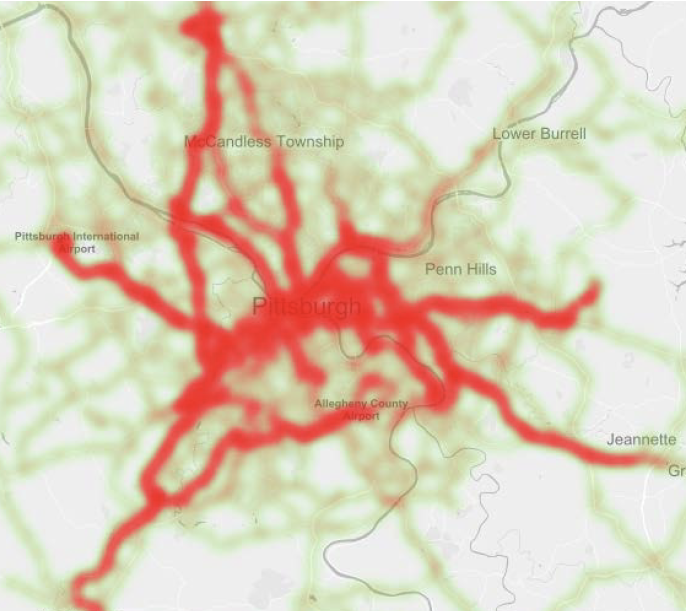
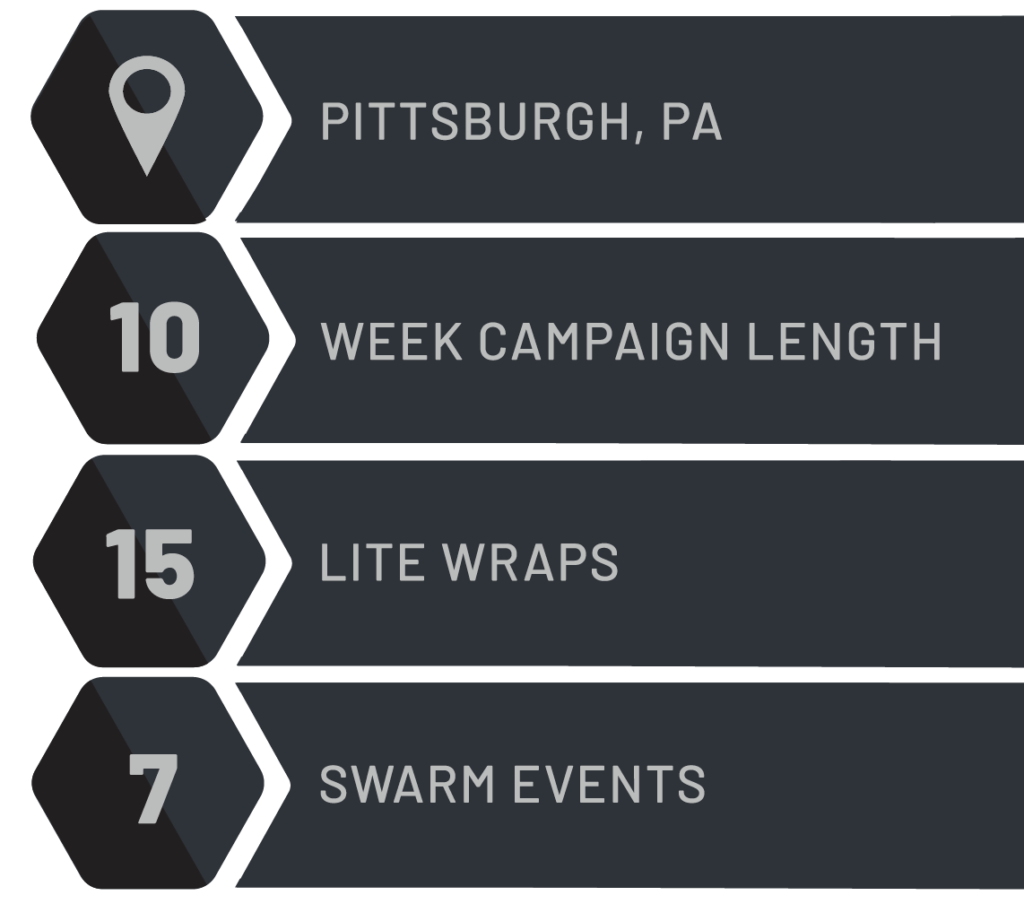
BENEFITS & RESULTS
Utilizing Wrapify’s Physical Retargeting features, Giant Eagle was able to show their online ads to the exposed devices from the campaign. All impressions, clicks, and attribution were measured on the platform…
To see the results download below!
Learn More at wrapify.com/brands
